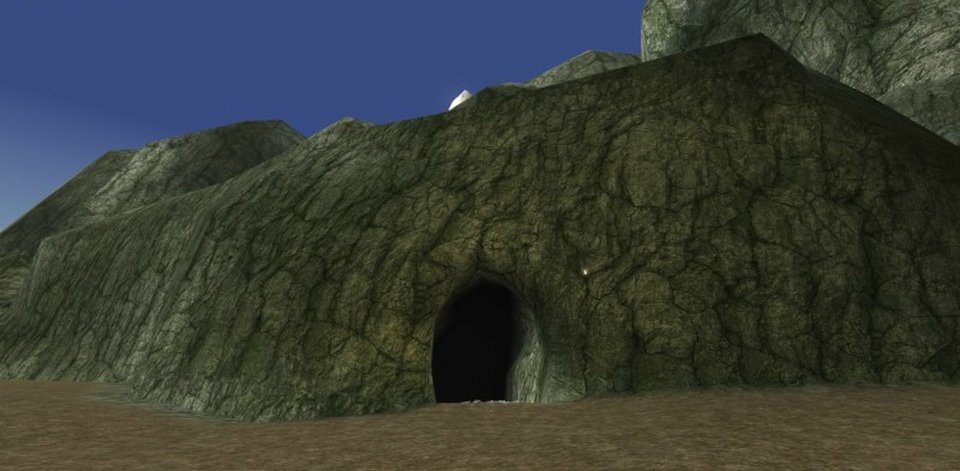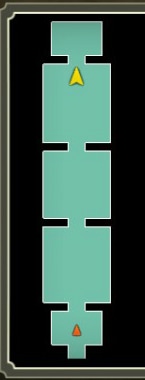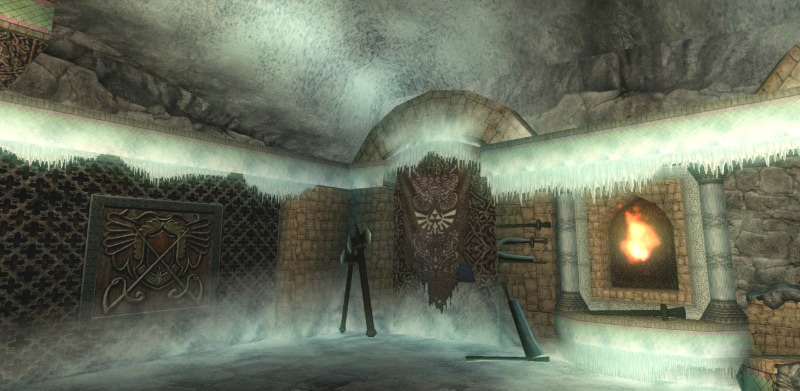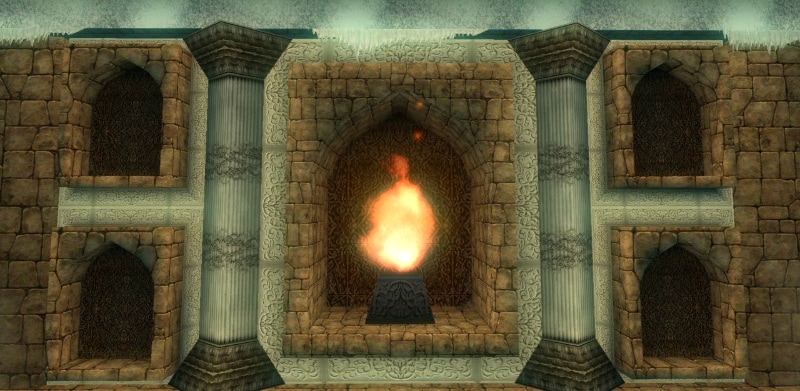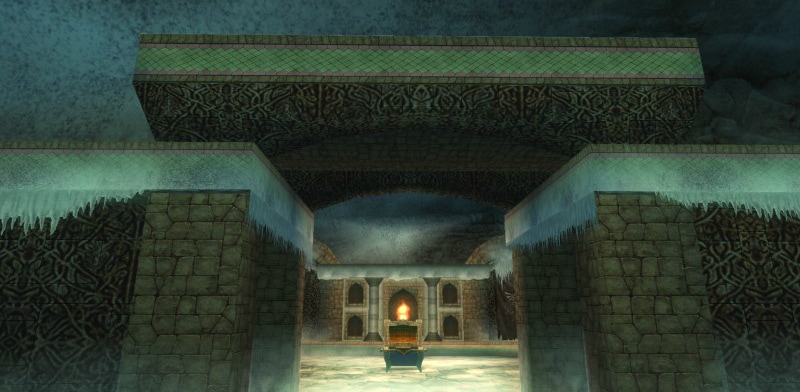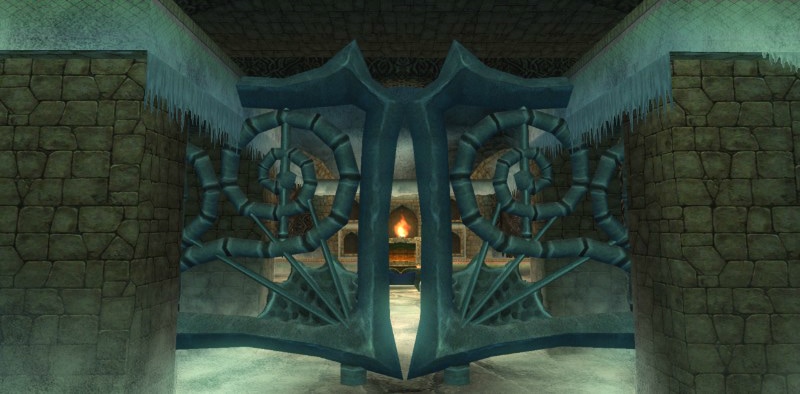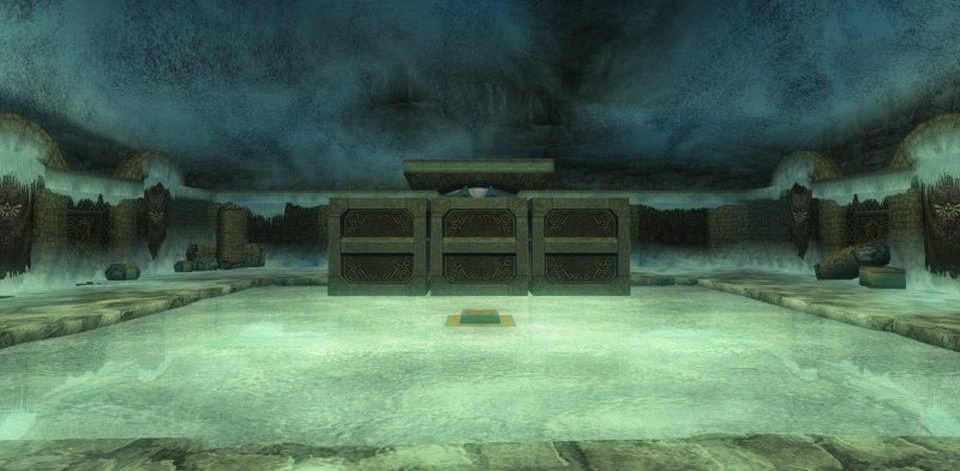A Bathhouse in Hyrule
"Everything is a miracle. It is a miracle that one does not dissolve in one's bath like a lump of sugar."
— Pablo Picasso
— Pablo Picasso
|
Notwithstanding the somewhat facetious quote above, bathing has always proved a persistent and critical element of health in many of the world's longest-standing civilizations, evidenced by bathhouses from the Japanese onsen to the Roman thermae. Bathing is the servant of Cleanliness, and has always taken various cultural forms, adopting different rituals and serving different functions. Bathing can be done out of necessity — the simple need to become clean, so as to be free from dirt, dust, and disease — but it can also take on a sacred aspect, often serving in purification rituals and ablutions in many religions, from Islam to Shinto. In the Hyrule of Twilight Princess, there is also evidence of an ancient bathhouse, though whether it was created for respite and pleasure or for ceremony and spirituality is as yet undetermined.
Behind an unassuming rock facade on a path leading to Zora's Domain from North Hyrule Field is a small series of chambers hollowed into a cave. As the map to the left shows, it consists of five small rooms — three main chambers, an antechamber, and a far room — arranged on a single axis. The rooms, when divided horizontally from the very center, are laid-out symmetrically, with the three baths in the three central chambers. And these are not truly separate chambers, as the walls which divide them do not actually make contact with the cave above, creating open, individual spaces under one large ceiling. |
Much of the cave has been left in a natural state, and a constructed shell has been built within its space. Low, flat walls with protruding arches, lintels, and pillars extend to all five rooms, separating the baths from the stark cave walls, giving it a distinctly man-made environment under an organic roof. Rough masonry of oddly-fitted stones creates the corner piers and parts of the wall, while other areas are covered by a carved arabesque or screen. Other pieces of stonework are decorated with an opus reticulatum theme of green and pink tiles, which give off the distinct feel of a bathhouse; they seem an incredibly modern element when compared to rather traditional design of this building. The screens, done in a diamond-and cross pattern, often carry the crest of the Royal Family as seen at Snowpeak, and many of the alcoves (designated by the gentle arches above them) are hung with a tapestry bearing the royal symbol of Hyrule: the Wingcrest. Weapons are hung upon the walls, much the same as at Snowpeak, creating a clear cultural connection between the two far-flung structures.
With its clear connections to both lowland Hylian architecture and to the mansion at Snowpeak, this bathhouse might seem rather straightforward. But, then one notices the gates which separate each room from the others. They are Zoran gates, of the same design as those found within the Lakebed Temple, with their curvilinear forging, aquatic themes, and nautical coloration. At first, this may seem puzzling, but, in reality, it makes perfect sense. Twilight Princess, as has been noted several times, displays an incredible depth of cosmopolitanism and trade relations; because of the location of this bathhouse in Lanayru Province, given its proximity both to Hyrule Castle and to Zora's Domain, and given the close relations between the royal families of Hyrule and the Zora, that the Zora should have had a hand in the construction of this water-dependent building is completely logical. The Zora, with their river, give the land its life and nourishment, and they likely created the water-channeling devices which made this bathhouse function. Architecturally, their legacy is bound up in this space alongside Hylian tradition, which gives us a magnificent look at cultural dispersion and connections within Hyrule — and in a place that was likely meant only as a simple puzzle.
I suppose the remaining question is: what happened to this place? It is readily apparent that these baths have seen no visitors for many years, as the entrance was closed off with a massive boulder. And, any cursory inspection of the interior must take note of the old frost and ice upon the walls. The baths themselves have frozen solid, creating mirrored pools of an unknown depth. There are many spots for torches upon the walls, and we can easily imagine steaming baths, the warm vapors rising overhead and filling the cave ceiling, slowly dripping back down to the floor in an endless cycle. The freeze could have been a side-effect of the icing-over of Zora's Domain, or it could have happened after the cave was sealed - the fires slowly dying and giving way to the creeping ice. We could speculate for hours about the nature and history of this bathhouse, which would likely come to naught, or we could simply enjoy it for what it is: a symbol of relaxation, purity, and cultural synthesis.

